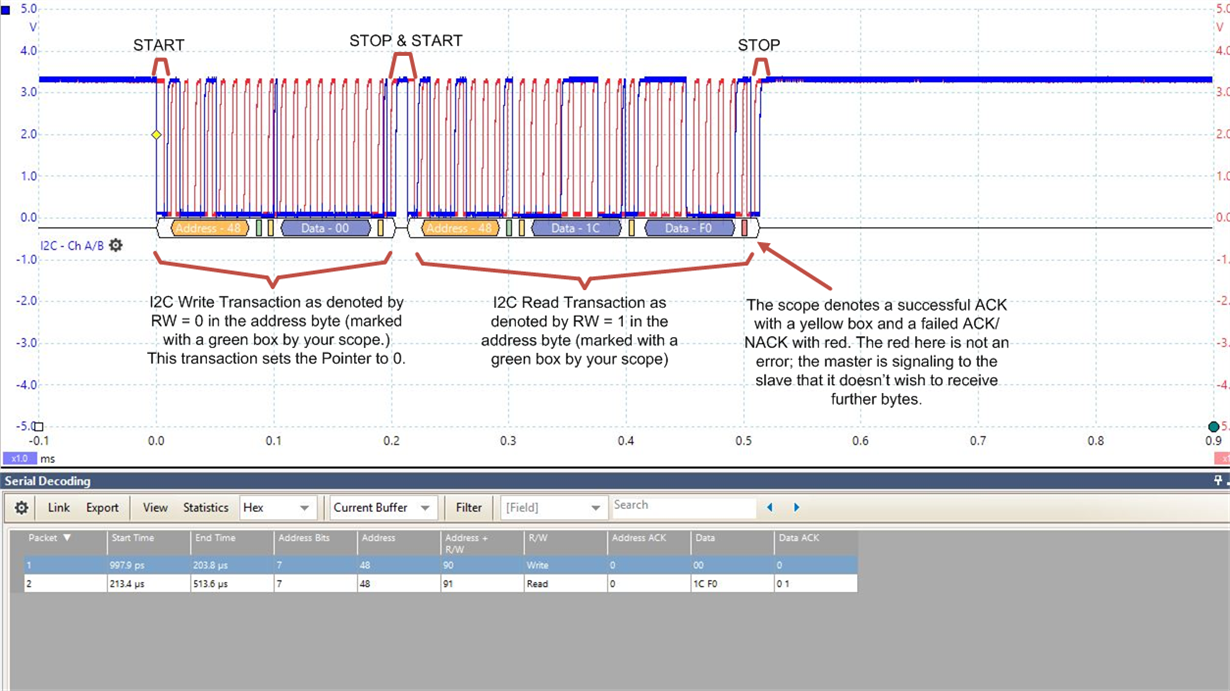Other Parts Discussed in Thread: TMP75B
Hello,
I am attempting to use the tmp175 with a tm4c123 tiva series microcontroller. This is my first i2c undertaking. I currently have it set for the 100kbps for easy scope captures.
I have the device configured to read out 12 bit resolution. I have a question about the use of the pointer register and reading the 2 bytes of temperature data out.
According to the data sheet, there is a 220ms conversion rate for the 12 bit resolution. When is a conversion triggered?
Also, I currently write the pointer register to the temperature block (0x00) end the transmission. Immediately I do a 2 byte register read. When debugging my code, sometimes it seems correct. Other times it seems very off. Is that the correct sequencing?
The datasheet for the tmp175 is lacking implementation help.
Thanks


